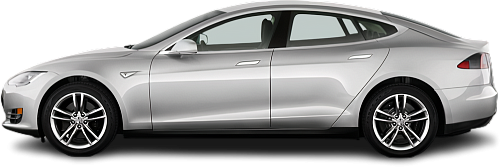Global EV Comparison: Tesla Model S 85 vs Model S Standard Range
Struggling to Decide? Let AI Help!
Your AI Summary Is Ready!
General Info
Since both vehicles have been discontinued, they are now only available on the used car market. You can get the Tesla Model S 85 (2012-2016) for as low as €15950, while the Tesla Model S Standard Range (2019-2020) begins at €34900.
The two vehicles share the same body style: Liftback.
| Property | Tesla Model S 85 | Tesla Model S Standard Range |
|---|---|---|
| Years of Production | 2012-2016 | 2019-2020 |
| Current Status | Discontinued | Discontinued |
| Country of Manufacture | Netherlands, USA | Netherlands, USA |
| Body Style | Liftback | Liftback |
| Market Availability | EU, USA | EU, USA |
| Price Europe (Used) | €15950 | €34900 |
| GCC Score | 6.3 | 6.8 |
Range and Efficiency
Even though the Tesla Model S 85 (2012-2016) has a larger battery, the Tesla Model S Standard Range (2019-2020) higher energy efficiency results in a longer real-world driving range.
| Property | Tesla Model S 85 | Tesla Model S Standard Range |
|---|---|---|
| Range (EPA) | 426 km | 462 km |
| Range (WLTP) | - Range (WLTP) | 456 km |
| Range (GCC) | 391 km | 413 km |
| Battery Capacity (Nominal) | 85 kWh | 75 kWh |
| Battery Capacity (Usable) | 80.8 kWh | 72.5 kWh |
| Efficiency per 100 km | 20.7 kWh/100 km | 17.6 kWh/100 km |
| Efficiency per kWh | 4.84 km/kWh | 5.7 km/kWh |
| Range and Efficiency Score | 5.8 | 7.1 |
Charging
Both vehicles utilize a standard 400-volt architecture.
The Tesla Model S 85 (2012-2016) offers faster charging speeds at DC stations, reaching up to 120 kW, while the Tesla Model S Standard Range (2019-2020) maxes out at 100 kW.
The Tesla Model S Standard Range (2019-2020) features a more powerful on-board charger, supporting a maximum AC charging power of 16.5 kW, whereas the Tesla Model S 85 (2012-2016) is limited to 11 kW.
| Property | Tesla Model S 85 | Tesla Model S Standard Range |
|---|---|---|
| Max Charging Power (AC) | 11 kW | 16.5 kW |
| Max Charging Power (DC) | 120 kW | 100 kW |
| Architecture | 400 V | 400 V |
| Charge Port | Tesla Type 2 (Mennekes) | Tesla Type 2 (Mennekes) |
| Charging Score | 6.1 | 6.5 |
Performance
The Tesla Model S 85 (2012-2016) is rear-wheel drive, while the Tesla Model S Standard Range (2019-2020) offers an all-wheel drive system.
The Tesla Model S Standard Range (2019-2020) boasts greater motor power and accelerates faster from 0 to 100 km/h.
| Property | Tesla Model S 85 | Tesla Model S Standard Range |
|---|---|---|
| Drive Type | RWD | AWD |
| Motor Type | IM | PMSM (front), IM (rear) |
| Motor Power (kW) | 278 kW | 398 kW |
| Motor Power (hp) | 373 hp | 534 hp |
| Motor Torque | 440 Nm | 755 Nm |
| 0-100 km/h | 5.6 s | 4.2 s |
| Top Speed | 225 km/h | 250 km/h |
| Performance Score | 5.4 | 6.8 |
Dimensions
The Tesla Model S 85 (2012-2016) and Tesla Model S Standard Range (2019-2020) are about the same size.
Both models have similar wheelbase lengths.
| Property | Tesla Model S 85 | Tesla Model S Standard Range |
|---|---|---|
| Length | 4970 mm | 4970 mm |
| Width (with Mirrors) | 2189 mm | 2189 mm |
| Width (w/o Mirrors) | 1964 mm | 1964 mm |
| Height | 1445 mm | 1445 mm |
| Wheelbase | 2960 mm | 2960 mm |
Cargo and Towing
Both models provide equal trunk space and the same total cargo volume when the rear seats are folded.
Both models feature a convenient frunk (front trunk), providing additional storage space.
Neither vehicle is officially rated for towing in in the EU.
| Property | Tesla Model S 85 | Tesla Model S Standard Range |
|---|---|---|
| Number of Seats | 5, 7 | 5 |
| Curb Weight | 2100 kg | 2183 kg |
| Cargo Volume (Trunk) | 745 l | 745 l |
| Cargo Volume (Max) | 1645 l | 1645 l |
| Cargo Volume (Frunk) | 60 l | 60 l |
| Cargo and Towing Score | 5.5 | 5.5 |




